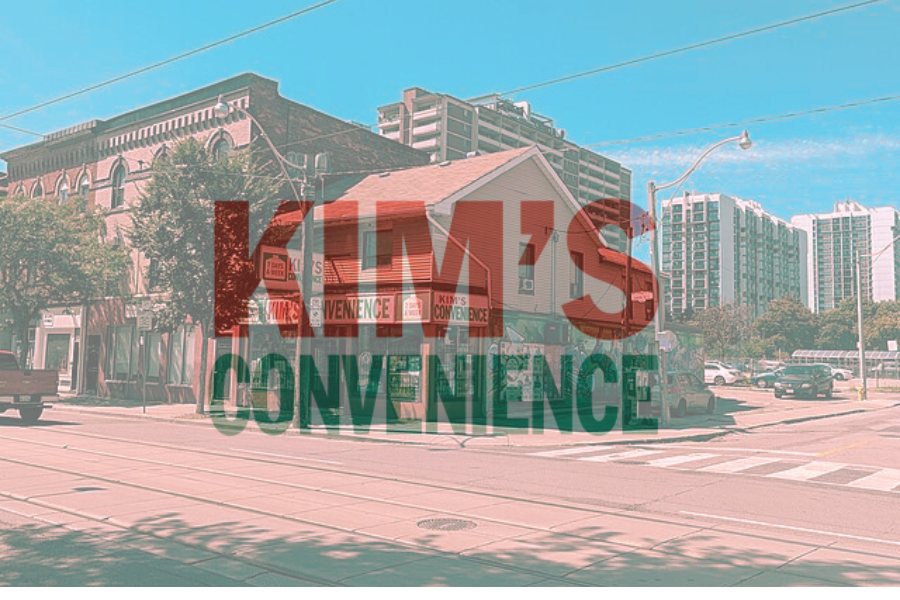The sound of a door chime rings as a customer walks into a convenience store in Toronto’s bustling Moss Park neighborhood. The owner, a middle-aged Korean man named Mr. Kim smiles politely as customer’s peruse the aisles, looking for snacks, drinks, and various amenities to keep them going throughout the day. As they find what they’re looking for and walk out the door, Mr. Kim bids them farewell with a chipper, “Okay, see you!” This scene is a still from the hit show Kim’s Convenience, but it’s also seen every day in convenience stores, laundromats, and businesses run by immigrants throughout the world.
In 2016, the Canadian Broadcasting Corporation’s Kim’s Convenience took the nation by storm, receiving record numbers of viewers. Four years later, the show also attained widespread popularity in the United States after being released on Netflix. The show’s authentic nature coupled with its hilarious, yet simultaneously incredibly realistic humour made it appealing to a litany of audiences.
Set in Moss Park, a neighborhood that is home to a myriad of cultures and people in the heart of Toronto, Kim’s Convenience explores the life of a Korean-Canadian family who manage a convenience store. The father, Mr. Kim, is a serious, yet simultaneously witty and charming middle-aged Korean man who loves nothing more than his convenience store, and wishes deeply for his daughter, Janet to take it over. The mother, Mrs. Kim, is a stubborn, but kind hearted and determined woman who stresses day and night over her children’s futures and familial issues. The daughter, Janet Kim, is a photography student at the Ontario College of Art and Design, and struggles with independence from her parents. Lastly, is the son, Jung Kim, a manager at a local car rental, who struggled with drug usage and criminal activity as a teen, ultimately estranging himself from the family after stealing money from the convenience store. Jung maintains a relationship with Janet and Mrs. Kim, but struggles to build back a relationship with his father. It is this tense, yet simultaneously rich and strong family relationship that is the heart of the entire show.
The very first scene of the very first episode of the show sets the scene for the rest of the show, when a gay couple walks into Mr. Kim’s store, asking him to hang up a poster advertising a local pride parade in the window of the storefront. Mr. Kim declines, saying that he doesn’t understand why pride parades are so boisterous and flashy, and expresses his wish for parades to be quieter, and more calm. The couple, perplexed and frustrated, ask Mr. Kim if he’s homophobic, and threaten to report him, to which Mr. Kim protests, by saying he can’t be homophobic, because he offers discounted goods to gay people. The scene ends with the couple buying a discounted chocolate bar from Mr. Kim, and walking out the store to a happy, “Okay, see you!” Scenes like this illustrate exactly what Kim’s Convenience is about. The rich culture that immigrant communities bring to other nations often comes at odds with the established nature of the social orders of other countries. It’s this conflict that ultimately results in division, but at the same time, it also results in new experiences, and a richer, stronger, social fabric that’s able to weather a rising wave of xenophobia and hate.
Perhaps one of the strongest examples of this can be seen in one of the show’s cold opens, when Mr. Kim and his friend, a local Indian restaurateur, converse about the sound a frog makes. Mr. Kim ardently defends the position that frogs make the sound “gaegul-gaegul” when they speak, whereas Mr. Kim’s friend insists that frogs make the sound “terr-terr.” Eventually, as the argument escalates, Janet walks in, and Mr. Kim asks her what sounds frogs make, to which she replies with “Don’t they say ribbit ribbit?” to which both Mr. Kim and his friend immediately dismiss as a byproduct of linguistic colonization resulting from years of living in Canada. Though on face just an ordinary scene written to get laughs, moments like this illustrate what the show is all about; being able to traverse established, rigid cultural boundaries, and create a new social order that blends different cultural experiences together.
Furthermore, the show effortlessly captures the tense nature of family life in immigrant communities. One of the core storylines of the show is built off of Mr. Kim’s disputes with his eldest child, Jung. Jung and Mr. Kim’s relationship is rocky, yet not irreparable. The pair frequently butt heads over their opposing worldviews, Jung’s criminal past, and Mr. Kim’s stubborn nature. Yet, despite this tension, Mr. Kim loves Jung very much, but can’t bring himself to admit his deep love and admiration for his son due to his stubborn nature and pride. This dynamic can best be seen when Mr. Kim attends a party for Jung, after he receives a promotion at the car rental where he works at, and notices Jung is stressed. Mr. Kim points this out, but Jung vehemently denies it, resulting in the two fighting, with their relationship that they had slowly built back crumbling. It’s scenes like this that represent what Kim’s Convenience is all about: the beautiful, yet simultaneously scary nature of life in immigrant communities.
Portraying immigrant culture in short, 30-minute-long television episodes is difficult, considering the expansive amount of distinct immigrant cultures and experiences, all with their own individual unique characteristics. Yet, Kim’s Convenience manages to do this effortlessly throughout its duration. It’s this ability to perfectly encapsulate the complex nature of immigrant life that makes Kim’s Convenience still relevant years after its release. In the midst of rising terror for immigrant communities as deportations, racial violence, and immigration restrictions rise, Kim’s Convenience serves as a moment of fresh air for immigrant communities.















Jeanne Mlady • Apr 20, 2025 at 2:32 pm
So happy I found this show! Love ever character. Need a break from my white bread world. Xoxo